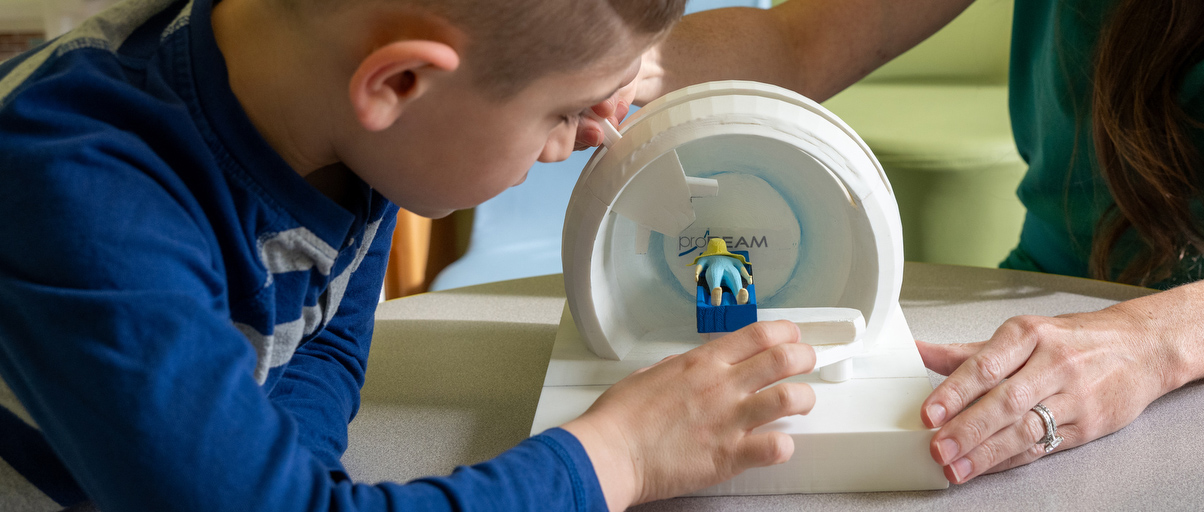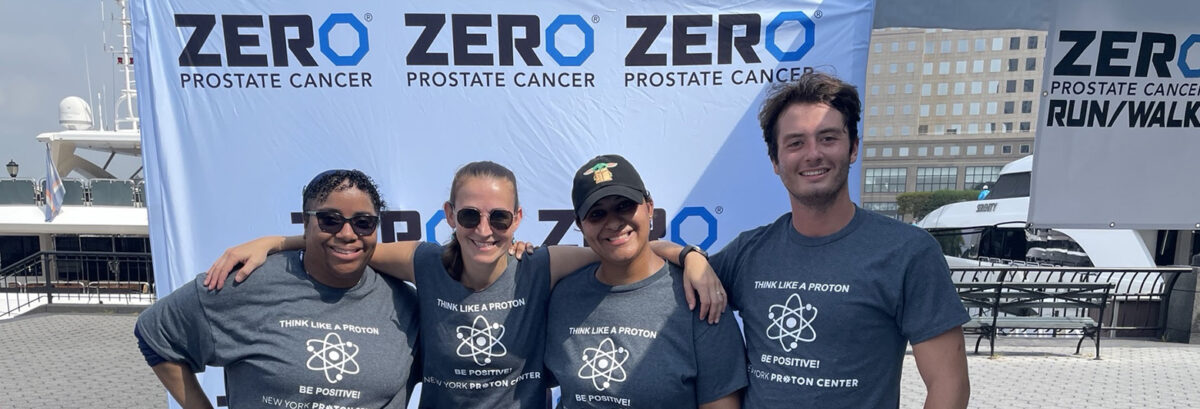Unmatched Precision, Fewer Side Effects
Because children’s bodies are still growing and developing, pediatric tumors—especially those near the brain, head, neck, spinal cord, heart and lungs—are particularly challenging to treat with conventional radiation, which can be associated with significant toxicities.
Proton therapy largely prevents these sensitive areas from receiving any measurable dose of excess radiation. The result is fewer side effects during treatment and fewer long-term side effects than seen from conventional radiation including developmental abnormalities, growth delay, reduction in IQ and intelligence, and secondary cancers.
What To Expect During Treatment
We understand you and your child may feel overwhelmed or anxious before undergoing proton therapy treatment. Our compassionate patient support team includes a child life specialist who will work with you every step of the way to help you get prepared.
Childhood Cancers We Treat Include
- Medulloblastoma
- Low and high grade gliomas
- Ependymoma
- Germ cell tumors
- Craniopharyngioma
- Atypical teratoid rhabdoid tumors (AT/RTs)
- Other rare brain tumors (Pineoblastoma)
- Rhabdomyosarcoma
- Ewing sarcoma
- Other types of sarcomas
- Neuroblastoma
- Retinoblastoma
- Lymphoma, including Hodgkin lymphoma
From Proton Therapy to Kindergarten
Thomas was treated at a proton therapy center in New Jersey in the spring of 2019. Since opening its doors in the summer of 2019, the New York Proton Center is making this advanced form of cancer treatment more accessible – and giving patients in New York and the surrounding region new hope in their fight against cancer.
What Will Treatment Be Like?
Follow along with our narrated e-books to learn what to expect when your child begins proton therapy treatment at our center.
Living a Full Teen Life After a Brain Tumor
Kailey, a teen equestrian, was diagnosed with medulloblastoma in 2022 and treated with surgery and proton therapy. Due to proton therapy’s pinpoint precision, Kailey’s treatment team could safely target the tumor with less damage to nearby healthy tissues and with fewer side effects.
Pencil Beam Scanning at the New York Proton Center
Patients at our center receive pencil beam scanning, a highly sophisticated and the most modern form of proton therapy. It uses an extremely narrow beam of protons to “paint” the intended radiation dose onto the tumor. The technology can target specific parts of the tumor with different radiation dose levels, while better protecting the surrounding normal tissues from irradiation.
Not All Proton Therapy Is Created Equal
Many other proton centers use “volumetric” beams that deliver a fixed quantity of energy to the entire tumor. But the pencil beam scanning technology at the New York Proton Center delivers “intensity-modulated proton therapy,” or IMPT.
Widely considered the most advanced form of proton therapy, IMPT can target different parts of the tumor with different radiation dose levels based on the prescription and tumor’s exact location, while better protecting the surrounding normal tissues from irradiation. That’s particularly valuable when treating the most complicated tumors, those residing in the fissures of the head, neck and skull base.




